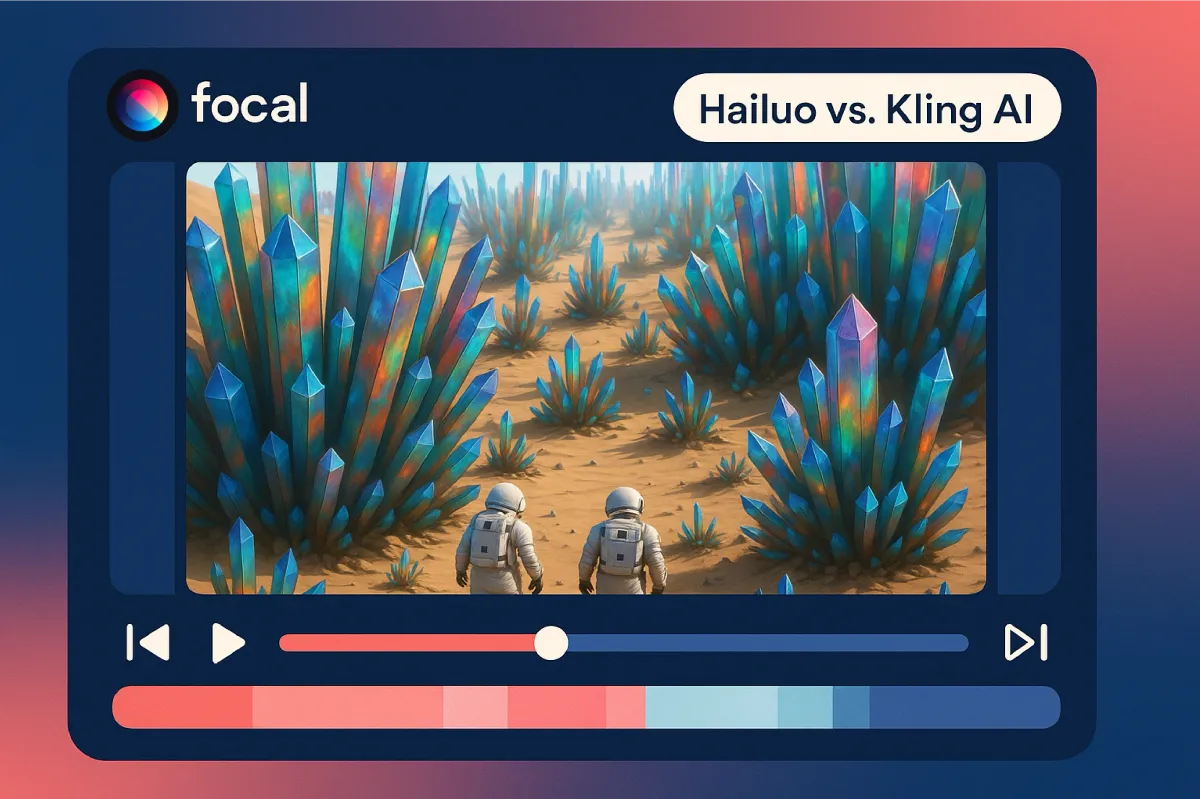Hailuo vs. Kling AI: Which Text-to-Video Model Suits Your Needs?

In the rapidly growing world of AI video generation, two models are turning heads: Hailuo and Kling AI. Both promise to turn text into high-quality, motion-rich video—but they approach the task very differently.
At Focal, we’ve integrated both into our platform so you can access their strengths without switching tools, tabs, or workflows. But how do you choose the right model for your project?
Here’s a breakdown of Hailuo vs. Kling AI—how they differ, where they shine, and how you can use each to bring your story to life.
📽 What Are Hailuo and Kling AI?
Both models are part of a new wave of text-to-video systems designed to generate short video clips directly from natural language prompts. But their outputs feel quite different:
- Hailuo leans toward cinematic, abstract, and moody visuals—think dreamy, interpretive sequences with a heavy artistic signature.
- Kling AI, by contrast, is focused on photorealism and motion fidelity. It shines in scenes that require realistic camera moves, human motion, and natural-looking environments.
🎨 Hailuo: For Stylized, Story-Driven Visuals
Best for: trailers, moodboards, music videos, surreal narratives
Hailuo creates visuals that feel like they came from a dream—or an art house film. The colors are bold, the compositions are painterly, and it’s less about accuracy than emotional tone.
Inside Focal, Hailuo is ideal when:
- You’re visualizing symbolic or poetic scenes
- You want impressionistic movement over realism
- Your script leans into fantasy, emotion, or experimental visuals
✨ Try Hailuo when you want to evoke a feeling—not just show an event.
🎥 Kling AI: For Realistic, Motion-Rich Scenes
Best for: explainer videos, realistic fiction, storyboarding live shoots
Kling AI puts emphasis on how things move. From human gestures to dynamic camera pans, its strength lies in making the shot feel like it was filmed—not generated.
Inside Focal, Kling AI is great when:
- You want natural-looking people or environments
- You need realistic action or movement
- You’re building a shot list or visual draft for live production
🎯 Use Kling AI when realism matters—whether for clarity, continuity, or plausibility.
⚖️ Side-by-Side at a Glance
🧠 So... Which One Should You Use?
The good news? You don’t have to pick just one. In Focal, you can test both models against the same script block or scene description. Sometimes, a Hailuo render will surprise you with the perfect tone, while Kling gives you a clean, grounded take to build on.
We recommend:
- Start with your intent: Are you conveying a feeling or illustrating a moment?
- Test both models on key scenes: You’ll often find different strengths in each.
- Mix and match: Focal lets you assemble scenes from multiple sources—choose what works best.
Final Thoughts
At Focal, we believe great storytelling means having options—and knowing when to use them. That’s why we’ve integrated models like Hailuo, Kling AI, LTX-V, Luma, and more—all in one platform that keeps you focused on your creative flow.
Whether you’re designing a cinematic short, pitching a brand campaign, or just playing with visual ideas, both Hailuo and Kling AI give you powerful, distinct tools to bring your vision to life.
Your story, your call. Try both—right inside Focal.
Test both Hailuo and Kling AI directly inside Focal to compare cinematic motion, pacing, and realism in your own edit.
📧 Got questions? Email us at [email protected] or click the Support button in the top right corner of the app (you must be logged in). We actually respond.
